30+ Horror Movies For Beginners — Start Here
Don’t watch horror movies? This list will help you jump into the genre.
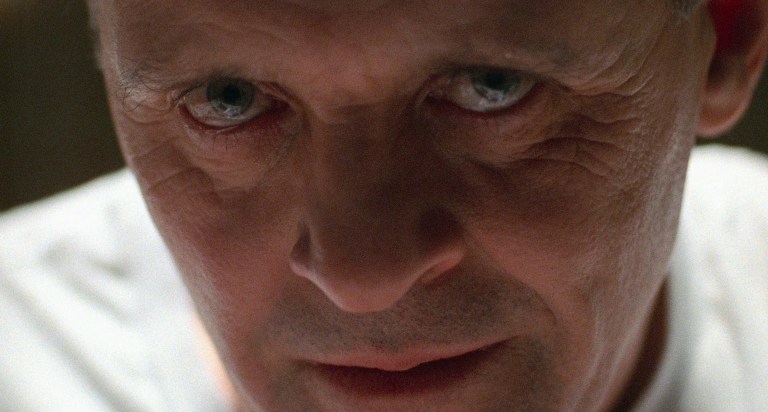
So, you want to try dipping your toes into the scary movies pool. Where do you even begin?
The truth is, starting out can be a little daunting. Ever since the first horror movie ever made, The House of the Devil (1896), the horror genre grew into branching tree that covers a diverse variety of subgenres, including monster movies, supernatural thrillers, and slasher flicks. Some are renowned for their violence and gore; others gained popularity because of the psychological distress they caused viewers. Just because you’re interested in one doesn’t necessarily mean you’ll love all the others, but you’ll never know if you never give them a try. And if you’re going to sample them all, why not go for the very best?
Rather than watch the same 10 scary movies everyone’s always talking about, here’s a comprehensive list for the movie fan ready to take a real dive into the vast genre that is horror.
Best Horror Movies For Beginners
Psycho (1960)
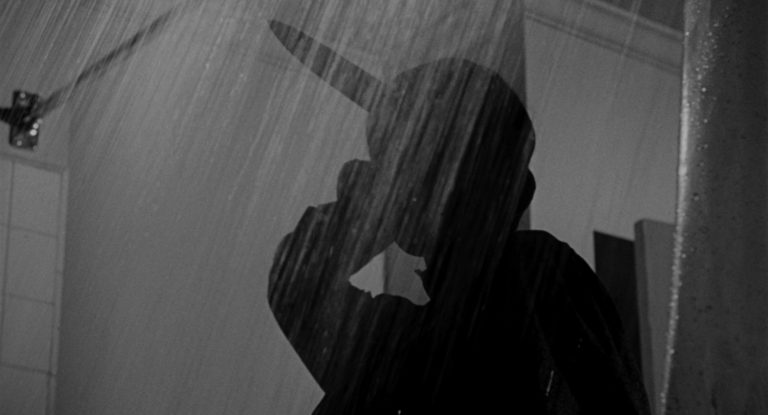
This ’60s Alfred Hitchcock masterpiece is one of the OG slasher films. Janet Leigh plays Marion Crane, a young secretary who goes on the run after she embezzles $40,000 and finds herself at the Bates Motel, where she bonds with the motel’s shy proprietor. Psycho is not only considered one of Hitchcock’s best films, but also one of the greatest films of all time, and though it was once considered unwatchable, it set a new standard of acceptability for violence and sexuality in American films.
The Exorcist (1973)
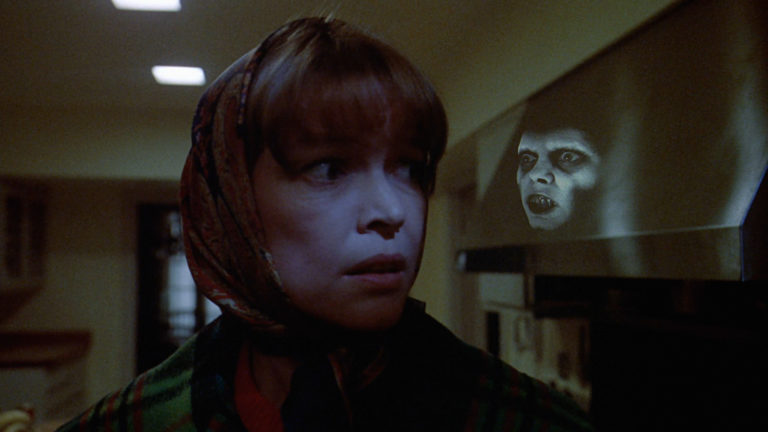
When people think of classic horror films, The Exorcist is often one of the first that comes to mind. The plot revolves around a 12-year-old girl who is possessed by a demonic entity and her mother, who attempts to save her by seeking the help of two Roman Catholic priests. The film was so visceral that, after seeing it in the cinema, some viewers even suffered adverse effects such as fainting, vomiting, and even heart attacks and miscarriages. Despite this, it was so critically acclaimed and culturally significant that the Library of Congress selected it for their National Film registry.
The Texas Chainsaw Massacre (1974)
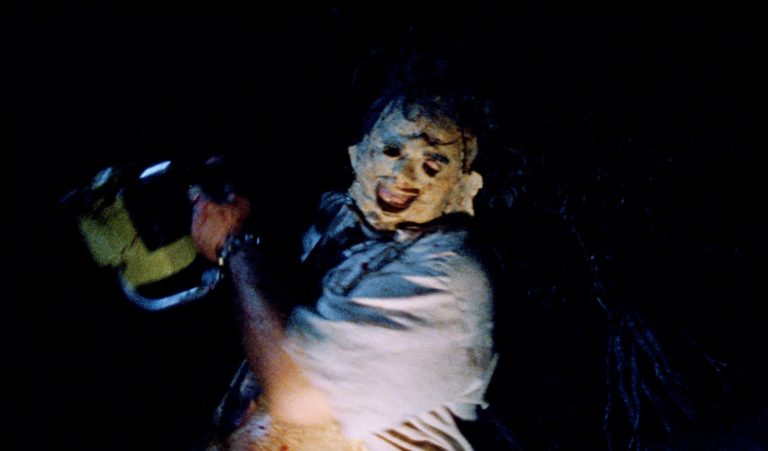
When two siblings and their three friends visit their grandfather’s grave in Texas, they encounter a family of psychopathic cannibals. This slasher film was considered so violent when it was released that many theaters chose not to show it, and it was even banned in several countries. Despite its early controversy, though, it’s not considered one of the most influential horror movies to date.
Jaws (1975)

This Spielberg classic stars Roy Scheider, Richard Dreyfuss, and Robert Shaw as a police chief, a marine biologist, and a professional shark hunter (respectively) who band together to take down a killer shark that’s terrorizing the community. Jaws cemented itself as the king of beach-day-gone-wrong horror flicks after some viewers exhibited extreme psychological distress after viewing, similar to the cinematic neurosis caused by The Exorcist. Despite this, it still received highly positive views for its artistry, including from Roger Ebert, who called it “a scary thriller that works all the better because it’s populated with characters that have been developed into human beings.”
Halloween (1978)

Jamie Lee Curtis made her film debut here as a teen babysitter who’s being terrorized by the infamous Michael Myers, a murderer who’s escaped from a mental hospital and is looking to kill again. Halloween was one of the earlier works inspired by Hitchcock’s Psycho, and perhaps one of the most successful—despite its tepid early reviews, this indie slasher film went on to become one of the most profitable independent films of all time and spawned seven sequels, a book, and a video game.
The Amityville Horror (1979)

This supernatural horror movie is based on the true story of Ronald DeFeo Jr., who shot and killed six of his family members; when a new family moved into their house, they moved back out within a month, claiming paranormal activity. The Amityville Horror expands on that tragedy and gives a fictional account of the strange, unexplainable events these newlyweds and their children experienced while living in the haunted house. While the movie received negative reviews from critics, it still went on to become one of the most successful independent films ever and is considered a classic horror film by scholars.
Alien (1979)

Sigourney Weaver found her breakout role in this science fiction horror film about a space mission gone wrong. After a commercial space tug receives an unknown transmission, a deadly extraterrestrial life form begins terrorizing the ship’s crew. Not only was Alien a box office success but it also received recognition from the Academy Awards, The Golden Globes, and the Grammy Awards.
Friday the 13th (1980)

Years after a summer camp was closed down due to a grisly double-murder and a tragic drowning, a group of camp counselors attempts to reopen it —only to be stalked and murdered one by one. This slasher flick is often compared to Halloween and even benefited from its success, scoring distribution from a major studio despite being an independent film, which was almost unheard of at the time. While Friday the 13th was criticized for its gory depictions of violence and received a tepid critical response, it was unquestionably a box office success and led to a long string of sequels and even a crossover with the Nightmare on Elm Street movies.
The Shining (1980)
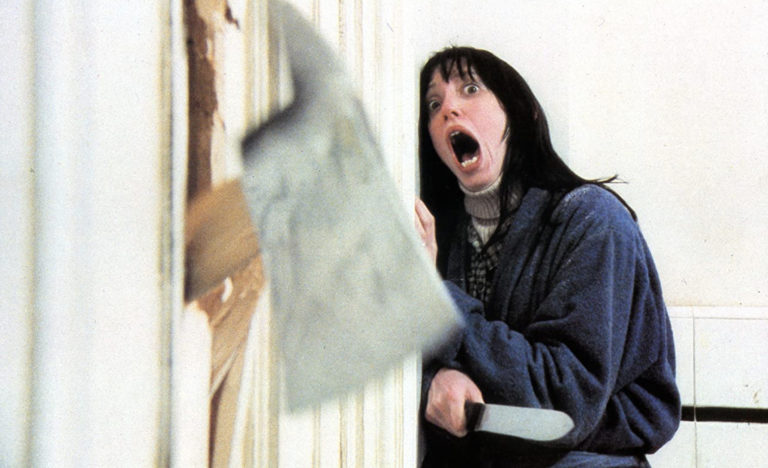
Based on a Stephen King novel and directed by Stanley Kubrick, it was inevitable that this psychological horror movie would become a classic. The film stars Jack Nicholson as Jack, an aspiring writer and recovering alcoholic who moves his wife (Shelley Duvall) and son (Danny Lloyd) into the historic Overlook Hotel when he’s offered a position as an off-season caretaker. But the hotel has a horrific past and a sinister presence, and the longer the family is isolated there, the faster Jack’s mental state deteriorates.
Evil Dead (1981)

The first film of a trilogy, Evil Dead was both universally acclaimed and considered one of the most significant cult films ever created. The story follows five college friends who take a trip to an isolated cabin in the woods, where they find an audio tape that, when listened to, releases flesh-possessing demons. Even Stephen King considers Evil Dead one of his favorite films, and Fangoria‘s Bob Martin went so far as to state, “Since I started editing this magazine, I have not seen any new film that I could recommend to our readers with more confidence that it would be loved, embraced and hailed as a new milestone in graphic horror.”
An American Werewolf in London (1981)
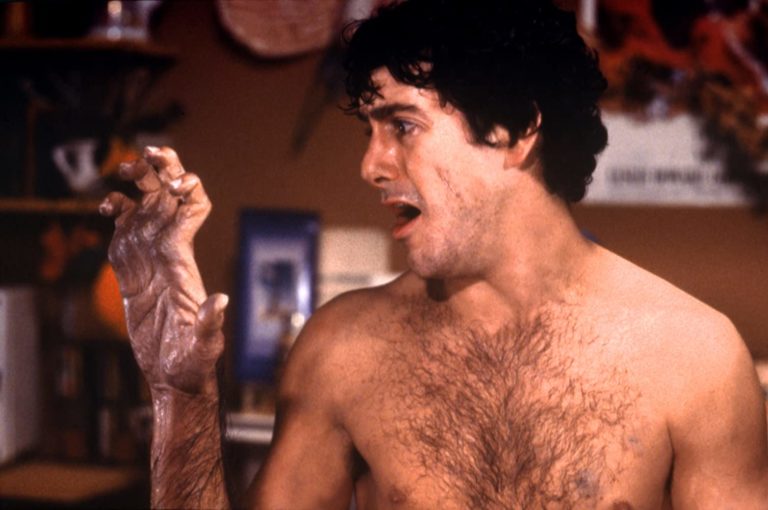
When two American college students go backpacking together in England, they’re attacked by a werewolf—but none of the locals believe them. What will happen when the next full moon approaches? According to critic Tom Huddleston, An American Werewolf in London is “not just gory but actually frightening, not just funny but clever.”
Poltergeist (1982)
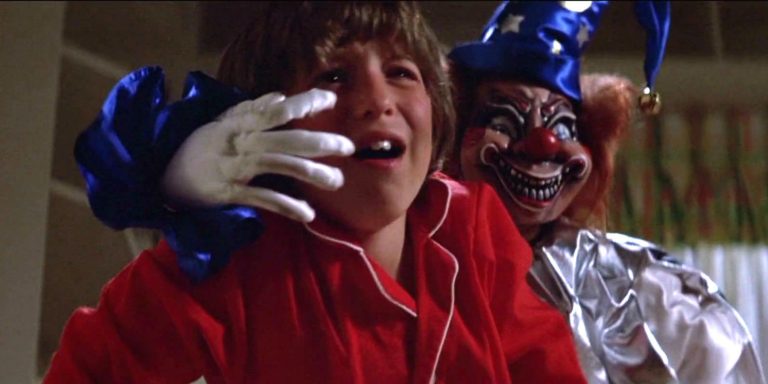
Written by Stephen Spielberg and directed by Tobe Hooper (director of The Texas Chainsaw Massacre), it’s no surprise that Poltergeist made it onto the list of classic horror films. The movie revolves around a suburban family who is terrorized by evil spirits that go so far as to abduct their young daughter. Poltergeist was the highest-grossing horror movie of 1982 and is still lauded as one of the best films ever made.
A Nightmare on Elm Street (1984)
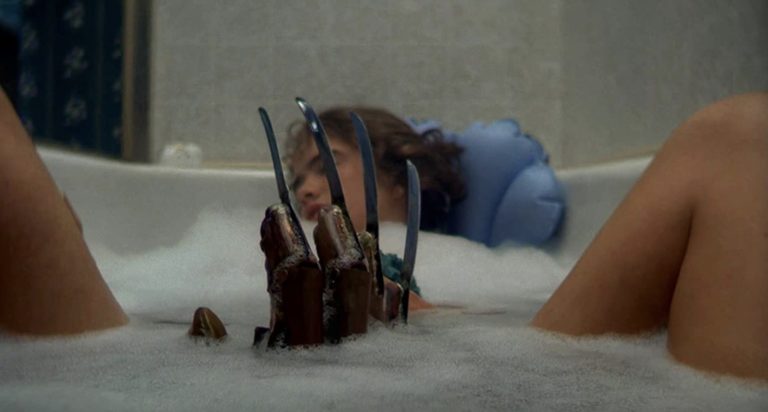
This Wes Craven classic brought us the iconic Freddie Krueger—a character most people know even without ever having seen the movie—and Johnny Depp in his film debut. A Nightmare on Elm Street is a supernatural slasher film that revolves around the monstrous spirit of a child murderer who invades the dreams of four Ohio teens who just so happen to be the children of the people responsible for his death. Even though the film had a limited theatrical release, it was instantly considered a commercial success.
It! (1990)
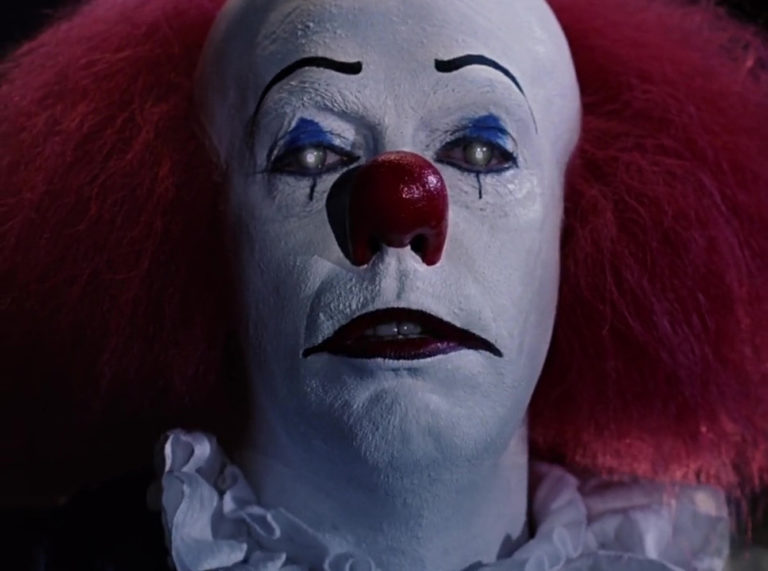
It! is famously known as the film that triggered many people’s fear of killer clowns, and for good reason. This two-part miniseries centers on seven pre-teens who encounter an evil demon who presents itself as a bloodthirsty clown—and how the experience haunts them 30 years later. It! was very well-received when it was first released and continues its legacy as a classic today, having spawned a reboot and documentaries surrounding its cultural impact.
The Silence of the Lambs (1991)

Few movies reach the level of cultural impact as Silence of the Lambs, which not only won multiple Academy Awards but also spawned a sequel, two prequels, several spinoff TV series, a musical, and multiple parodies. The film also introduced many to Hannibal Lector, the cannibal serial killer played by Anthony Hopkins who teams up with Jodie Foster’s Clarice Starling to catch a madman who skins his victims. Not only is this film iconic in the horror genre but is considered one of the most influential movies to ever be made—even critic Robert Ebert considers it a masterpiece.
Candyman (1992)
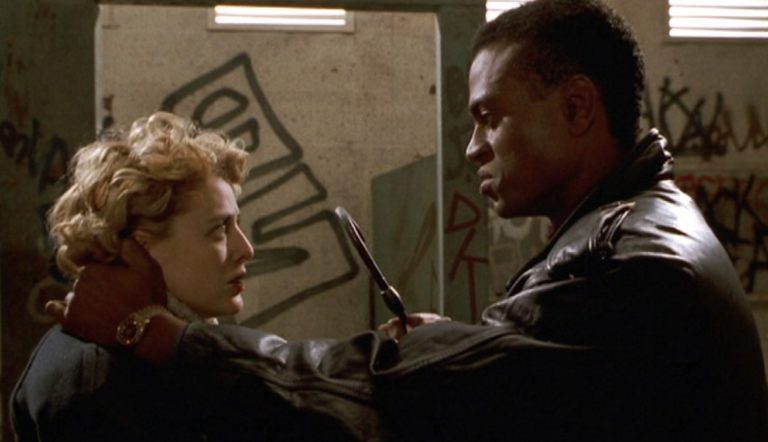
While a grad student works on finishing up her thesis about folklore, she comes across the legend of “Candyman”—the son of a slave who was brutally murdered for his relationship with a wealthy white woman. But in researching the urban legend, she accidentally his vengeful spirit. Candyman was met with generally positive reviews and was eventually followed up by three sequels, including the soon-to-be-released fourth installment by Nia DaCosta and Jordan Peele.
Hocus Pocus (1993)
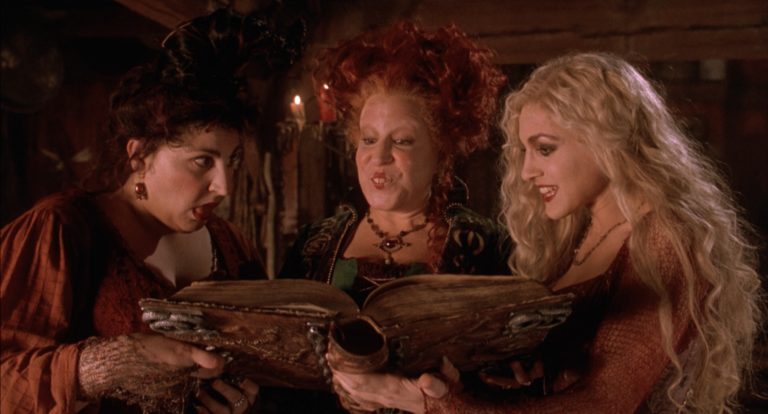
Hocus Pocus is considered a Halloween staple for a reason—it’s spooky, funny, and just tame enough that you can enjoy it with the whole family. The movie revolves around a teen boy and his younger sister who move to Salem, Massachusetts around Halloween and accidentally release the spirits of three youth-hungry witches. Starring Bette Midler, Sarah Jessica Parker, and Kathy Najimy, it’s no surprise this film became a cult classic.
The Scream Franchise (1996-2022)
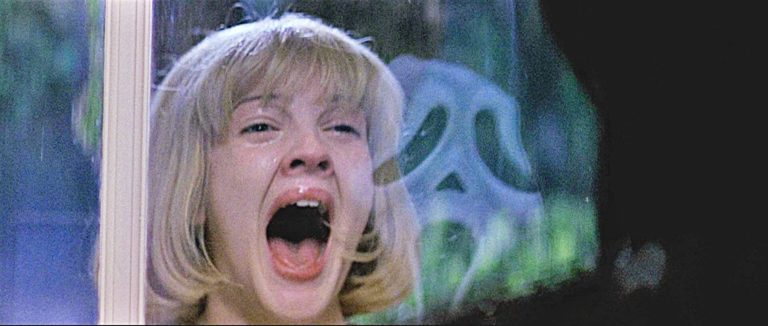
Whether or not you’ve seen the film, there’s no doubt that you’d recognize the iconic black and white mask donned by Scream‘s iconic killer. The original film revolves around a teen girl who suddenly becomes the target of a murderer who terrorizes her and her friends by using horror movies to play a deadly game, with each sequel film following a similar format. This meta slasher film series is also chock-full of well-known names: Drew Barrymore, Carrie Fisher, Patrick Dempsey, and Allison Brie, to name just a few.
The Blair Witch Project (1999)
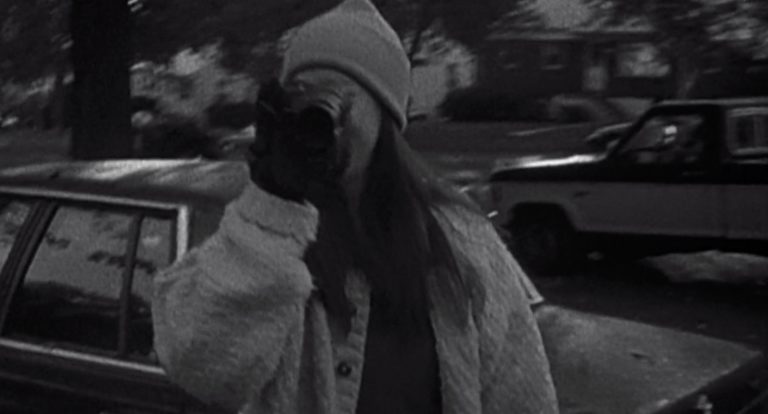
The Blair Witch Project is oftentimes credited with reviving an almost entirely abandoned horror genre: footage horror. The film is purportedly a true story of three film students who go missing after heading off into the woods to make a documentary about the Blair Witch legend, only leaving behind found footage film of the hours leading up to their disappearances—the footage that, in the end, becomes The Blair Witch Project in its entirety. Though it only did fairly well upon its release, the movie is now widely considered a sleeper hit.
The Sixth Sense (1999)

The Sixth Sense is a supernatural psychological thriller film that is known best for its renowned plot twist (unsurprisingly, considering it’s an M. Night Shyamalan movie). Starring Bruce Willis, Toni Collette, and Haley Joel Osment, the story revolves around a boy who can communicate with the dead and his child psychologist. It was met with positive reviews and nominations at the Academy Awards and the Golden Globes and created one of the most well-known catchphrases to ever come from a movie: “I see dead people.”
Sleepy Hollow (1999)
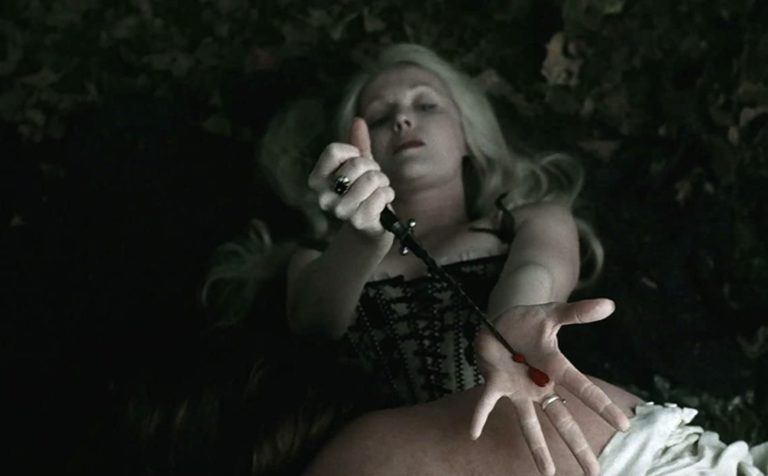
Directed by Tim Burton and starring Johnny Depp and Christina Ricci, this movie is based on Washington Irving’s short story The Legend of Sleepy Hollow. When three people are decapitated in the village of Sleepy Hollow, police constable Ichabod Crane travels from New York City to investigate the murders—and finds the culprit may be the legendary Headless Horseman. While it’s not considered Burton’s best work, Richard Corliss wrote it was “Burton’s richest, prettiest, weirdest [film] since Batman Returns.”
The Ring (2002)
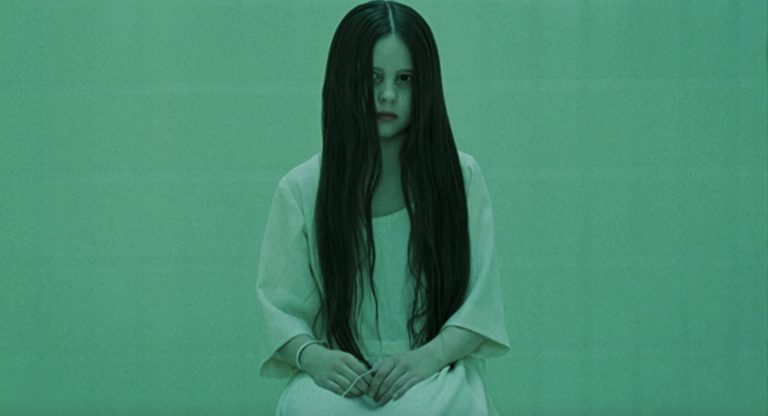
This American remake of the Japanese horror movie centers around the infamous videotape with an even more sinister message that follows: “You will die in seven days.” We meet Rachel Keller (played by Naomi Watts) who is investigating the mysterious death of her niece, her niece’s friends, and the mysterious tape that they each watched prior to their deaths. The Ring was a huge commercial success, grossing over $249 million worldwide, and ultimately became one of the highest-grossing horror remakes.
Resident Evil (2002)

The first installment of this film franchise was loosely based on the video game of the same name and revolves around a military unit that fights off hundreds of scientists that have transformed into zombies after a lab experiment gone wrong. While the movie was met with negative reviews, it still became a box office success and spawned five zombie movie sequels (and even gained the honor of becoming James Cameron’s biggest guilty pleasure movie).
Signs (2002)
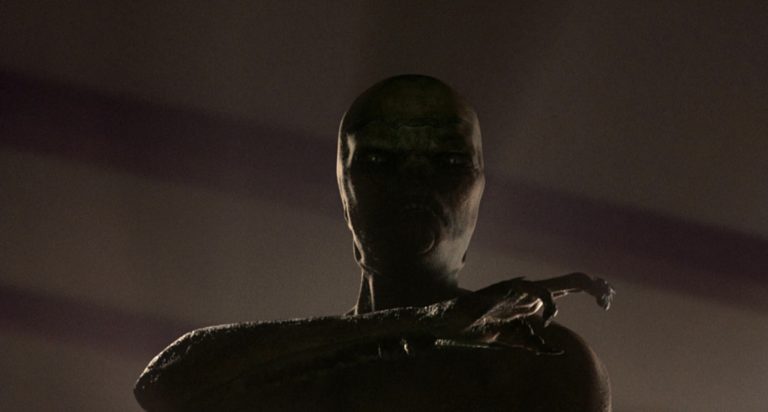
When a family finds mysterious crop circles on the farm they’ve been living on, they slowly begin to realize they may be an indication of something much more sinister than they originally believe. Directed by M. Night Shyamalan and starring Mel Gibson, Joaquin Phoenix, and Rory Culkin, this alien science fiction thriller is perfect for anyone who likes thinking about extraterrestrial lifeforms. According to Nell Minow, Shyamalan’s “only flaw was not leaving anything to the audience’s imagination.”
Dawn of the Dead (2004)
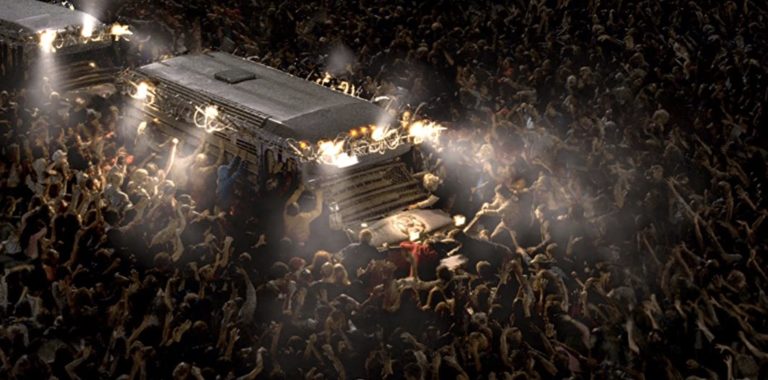
When a worldwide plague leaves most of Earth’s inhabitants as aggressive, flesh-eating zombies, a handful of human survivors band together and take refuge in a Midwestern shopping mall. This zombie film marks Zack Snyder’s directorial debut, and with a fairly good outcome—it received some positive praise, and according to Rotten Tomatoes, is a “kinetic, violent and surprisingly worthy remake of George Romero’s horror classic that pays homage to the original while working on its own terms.”
Paranormal Activity Franchise (2007-2022)
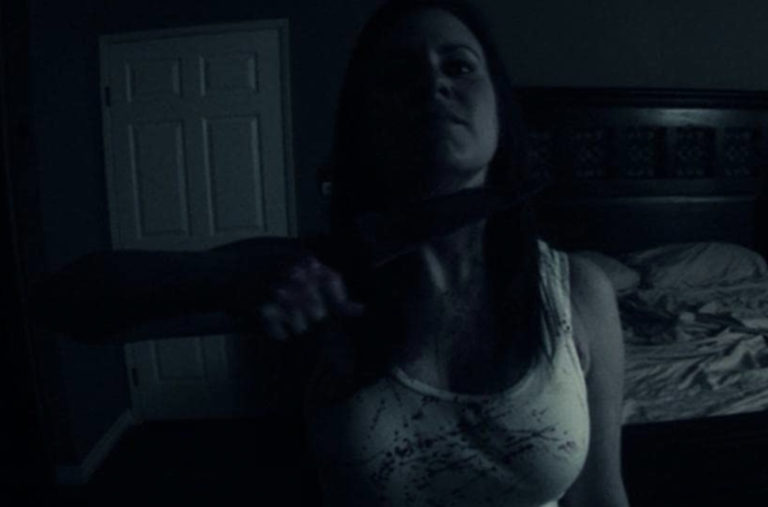
Following in The Blair Witch Project‘s footsteps, Paranormal Activity achieved incredible success as a found-footage horror film. The first movie is purportedly footage from a suburban couple who begin experiencing supernatural phenomena and decide to record their life in an attempt to prove what’s been happening. The film’s sequels and prequels are filmed in similar ways and are used to flesh out the story’s mythology, specifically regarding the demonic presence. Critic Robert Ebert applauded the first installment, writing, “It illustrates one of my favorite points, that silence and waiting can be more entertaining than frantic fast-cutting and berserk f/x.”
Zodiac (2007)
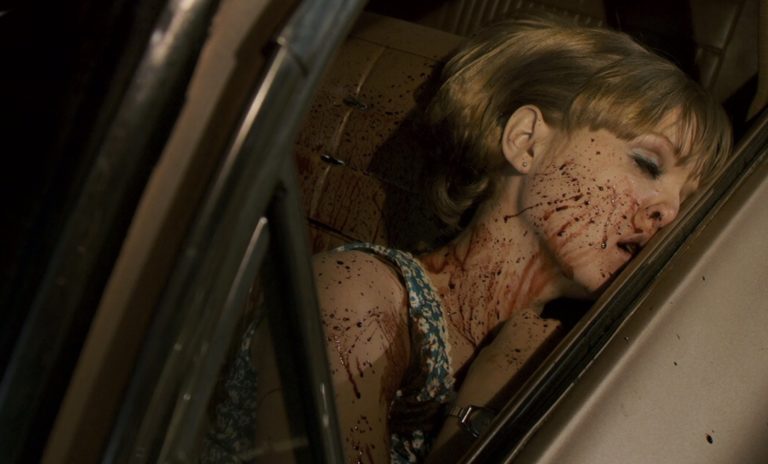
Starring Mark Ruffalo, Jake Gyllenhaal, and Robert Downey Jr., this star-studded David Fincher film follows the fictionalized manhunt of one of the most infamous real-life serial killers: The Zodiac Killer, a murderer from the San Francisco Bay Area with a penchant for leaving behind coded messages. The film received positive reviews, with Owen Gleiberman calling it a “procedural thriller of the information age” that “spins your head in a new way, luring you into a vortex and then deeper still.”
Cloverfield (2008)

Directed by Matt Reeves and produced by J.J. Abrams, Cloverfield revolves around a group of friends who venture out into the streets of New York during a violent monster attack. At the time, it became the most successful movie to ever be released in January and is described positively on Rotten Tomatoes as “a sort of Blair Witch Project crossed with Godzilla.”
Coraline (2009)
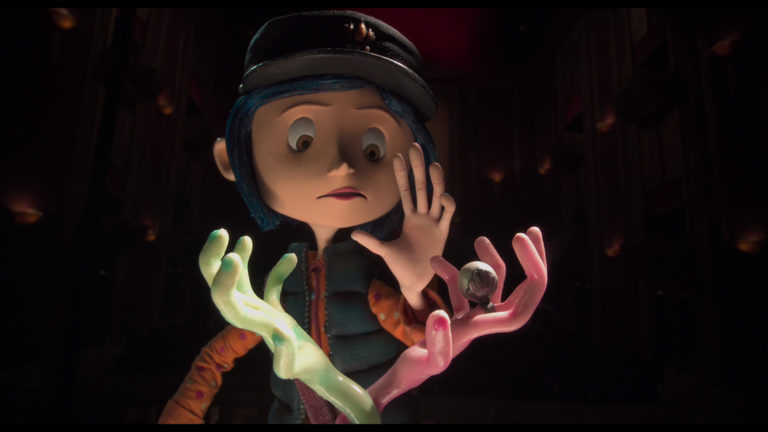
Coraline might just be the creepiest stop-motion movie ever made (and that’s saying a lot). The story follows an 11-year-old girl who is frustrated with her home life and is consequently delighted when she finds an idealized parallel universe. But the longer she stays there, the more sinister this new place seems to become. Critic A. O. Scott wrote that Coraline “lingers in an atmosphere that is creepy, wonderfully strange and full of feeling.”
The Insidious Franchise (2010-2018)

The first Insidious film follows a young boy who mysteriously goes comatose after moving into a new house, prompting his family to turn to a psychic for help, and each following movie is a case file for a different demonologist. While the movies have received mixed reviews, they still achieved relative success at the box office.
The Conjuring (2013)
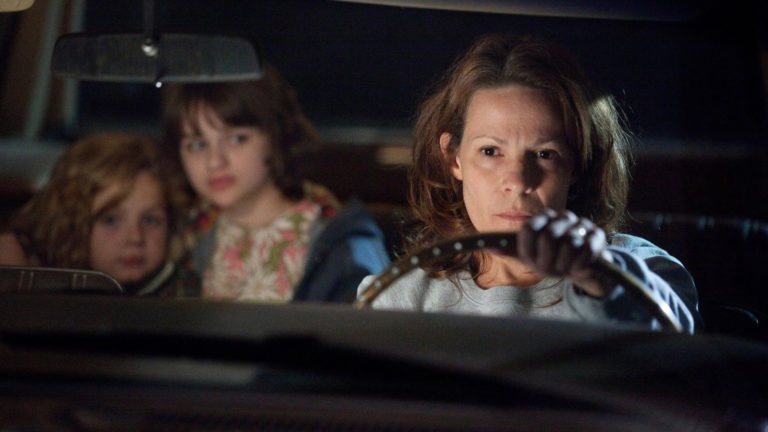
Based on the alleged real-life exploits of paranormal investigative couple Ed and Lorraine Warren, The Conjuring meets the couple (portrayed by Patrick Wilson and Vera Farmiga) as they attempt to help the Perron family who is experiencing increasingly disturbing occurrences in their newly purchased farmhouse. What the Warrens discover, however, is that the Perron’s are being pursued by a much darker force than they could have anticipated and it will take everything in the couple’s power to deliver the family, and themselves, from this evil.
It Follows (2014)
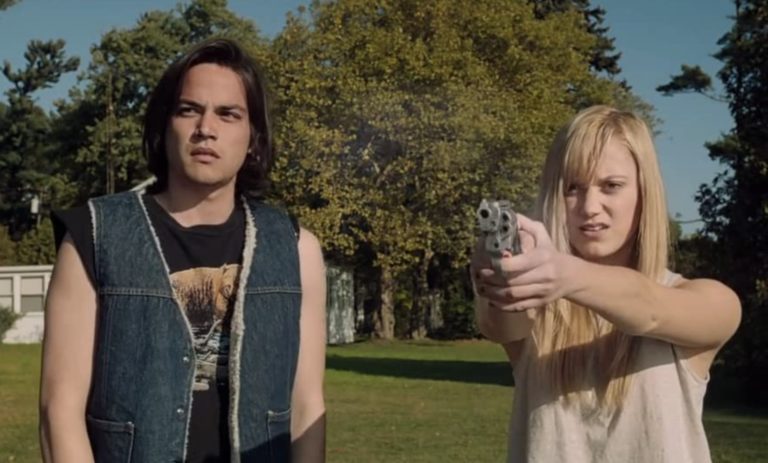
After sleeping with her date for the first time, a young woman named Jay learns she’s taken a curse from him: wherever she goes, a cumbersome, shape-shifting entity will follow her until it catches her and she meets her doom. The only way to (seemingly) break the curse? Have sex with someone else and pass the entity to them. It Follows was initially only given a limited release, but due to its positive reception was given a wide release two weeks later at which point it was an instant success and received critical acclaim. The horror elements of this pop culture phenomenon are palpable, and it’s easy to see at first glance why it made such a noise for horror fans upon its release. It Follows holds a 95% approval rating on Rotten Tomatoes, which refers to the scary movie as “Smart, original and, above all, terrifying.”
Get Out (2017)

This psychological thriller from Jordan Peele watches as a young, African-American man, Chris, goes home with his white girlfriend, Rose, to meet her family for the first time. While everything appears fine at first, Chris slowly begins to realize something much more sinister and nefarious is at play in the (what seems like a) cookie-cutter suburban home. Layered with metaphor, symbolism, and subtle but powerful commentary on the state of racial issues in the world we currently live in, Get Out is a master in modern filmmaking. Peele would go on to be the first Black recipient of the Academy Award for Best Original Screenplay for the film.
Us (2019)
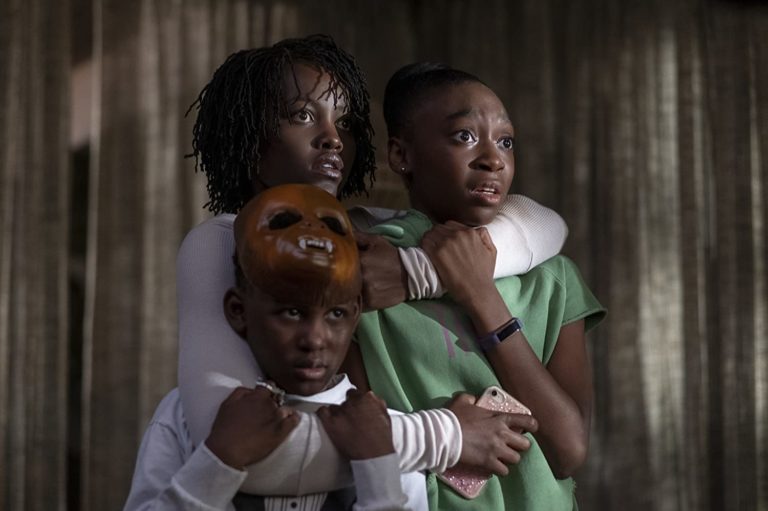
Following the critically acclaimed Get Out, Director and writer Jordan Peele brings us the story of the Wilson family who while on a vacation to Santa Cruz are attacked by a mysterious group of doppelgängers. Known as “The Tethered” they share a soul with each of the family members and seek to finally “untether” themselves—at anyone’s expense. Us, according to Peele, is ultimately a story on the ramifications of ignoring privilege, and reminds us that: “Those who suffer and those who prosper are two sides of the same coin. You can never forget that. We need to fight for the less fortunate.”